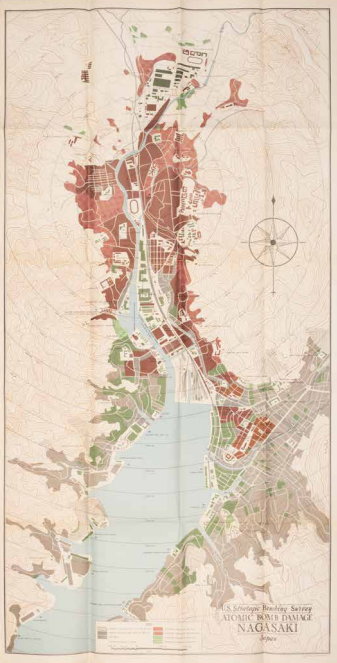Second atomic bomb destroys Nagasaki
This sober report analyses the effect of the atomic bombs on Hiroshima and Nagasaki (6 and 9 August 1945) compared to ‘ordinary’ bombings of other Japanese cities. ‘Nagasaki’ was less effective than ‘Hiroshima’ due to the hilly terrain, but the overall effect turned out to be greater, owing to the elimination of heavy industry. In reality, military production in Nagasaki had already ceased almost entirely and the primary aim was to force Japan to surrender by destroying entire cities. With some concern, the authors note that atomic bombs on American cities would result in enormous damage and death. They recommend taking measures. Cold, hard figures summarise the suffering of the Japanese people. The focus is on the Japanese willingness to continue the war. The conclusion: the war was shortened by three months at most. The map distinguishes severe or superficial damage caused by the bomb itself, as well as damage caused by fire. The atomic bomb becomes the most terrifying symbol of the modern military.

US Government Printing Office, The United States Strategic Bombing Survey, Atomic Bomb Damage Nagasaki, Japan, Washington 1946, in: The United States Strategic Bombing Survey, The Effects of Atomic Bombs on Hiroshima and Nagasaki. Coll. S/T K.193.121 x 64.5 cm.
